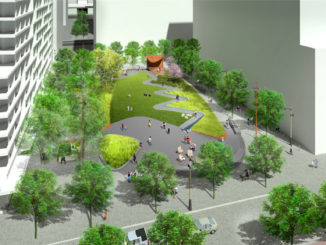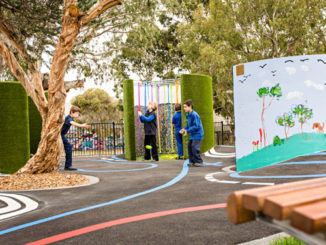I just got my hands on `Dirt`, a new book from PennDesign that is collection on interesting and thought-provocating essays, conversations and images. The books introduction begins with `Dirt comes from a position at the intersection of landscape and architecture and presents a selection of work that shares dirty attitudes….`. The book is layered in five chapters Story Lines (Narratives of all kinds), Fertile Minds (brillant projects that do not follow straight lines), Process Work (Elegant and useful things born from the complex), Active Agents (systems & organisation frameworks), Rich Ground (various projects rising from the dirt). The essay material is from various landscape architects, theorists and writers from around the world.

`Dirt` has a strong graphic design that draws you into the written word with ease. Much of subject matter of the essays is complex and requires a level of attention and thought to truly understand the writers material and discussion, thankfully the book also includes some great conversations with Sylvia Lavin, Phoebe Washburn, Marin Weiss, Mark Alan Hughes & Willam W. Braham which are peppered throughout the book. These conversations allow the reader to take a step back and allow a conversation to take place whilst still take in the material from previous essays.
`Dirt` contains various essay topics including Autonomous Worlds, Automorphic & Biomorphic forms, the remaking of Spiral Jetty, Time and physical world, Imagery & Media, Plants & Parametrics, Line & Shadow Graphics, Design Discourse, Suburbia, Irony of the Industrial, Dirty Cities, Post-Industrial Terrain, Ecology, Landscape Urbanism, Surfaces between Architecture & Landscape, Waste and Dirt, Green Roofs, the Ephemeral, and Sustainability.

I have skim read many essays in the last few days(this is why i have called this a `First Look` and I will continue to read the book over coming weeks to fully appreciate the essay material.) but I have been drawn into several essays that have not disappointed. Keller Easerling`s essay Rumour drew me into read more about the power of rumour, the multiplier effect and design as rumour, something that previously seemed mundane to me and now has a new outlook and makes me take a more critical eye to architecture rumour and hyperbole. The essay by Richard Wesley about Robert Le Richolais research into structural framework opens up an interesting world of design. Lindsay Bremner`s Six Ways of Being a Stranger gives great insights into South Africa. The essay by Megan Born titled Root Words is a very interesting look at Ian McHarg`s work. Born gives a great introduction to Ecolgy, for the Evolution of Planning and Design (McHarg`s 1968 essay) and she also provides an interesting discussion about the influence of McHarg`s work on modern landscape architects.

Dirt as a collection of essays allows the reader to take in the material and then digest it without having to read through vast swathes of continuous text, also the books format is a good size for images and reading. Overall, the book is interesting in its diverse range of material and imagery and also provides students and practitioners with much to think about and discuss. Dirt provides great material for landscape architecture courses around the world and I would say that it will be on many landscape theory reading lists in years to come.
Dirt edited by Megan Born, Helene Furján, Lily Jencks with Phillip M. Crosby published by PennDesign and distributed by MIT Press. Megan Born is a landscape and architectural designer at James Corner Field Operations in New York. Helene Furján, Director and founding editor of viaBooks, is Assistant Professor of Architecture at the University of Pennsylvania School of Design and author of Glorious Visions: John Soane`s Spectacular Theater. Lily Jencks runs the landscape and architectural design office LJA+Land in London.
Dirt presents a selection of works that share dirty attitudes: essays, interviews, excavations, and projects that view dirt not as filth but as a medium, a metaphor, a material, a process, a design tool, a narrative, a system. Rooted in the landscape architect`s perspective, Dirt views dirt not as repulsive but endlessly giving, fertile, adaptive, and able to accommodate difference while maintaining cohesion. This dirty perspective sheds light on social connections, working processes, imaginative ideas, physical substrates, and urban networks. Dirt is a matrix; as a book, it organizes contributions from architecture, landscape architecture, urban planning and design, historic preservation, fine arts, and art history. The chapters predict and report on city waterfronts revamped by climate change, the reinvention of suburbia, and cityscapes of ruins; dish the dirt with yet-to-be proven facts; make such unexpected linkages as ornament to weed growth and cell networks to zip-ties; examine the work of innovative thinkers who have imagined or created, among other things, a replica of Robert Smithson`s famous earthwork Spiral Jetty in `table-top scale,` live models of the Arctic ice caps, and an inhabitable `green roof`; and describe an ecological landscape urbanism that incorporates the natural sciences in its processes.
Dirt is available from MIT Press or through Amazon with a list price of $34.95 but we purchased it for $23.07 + postage.





